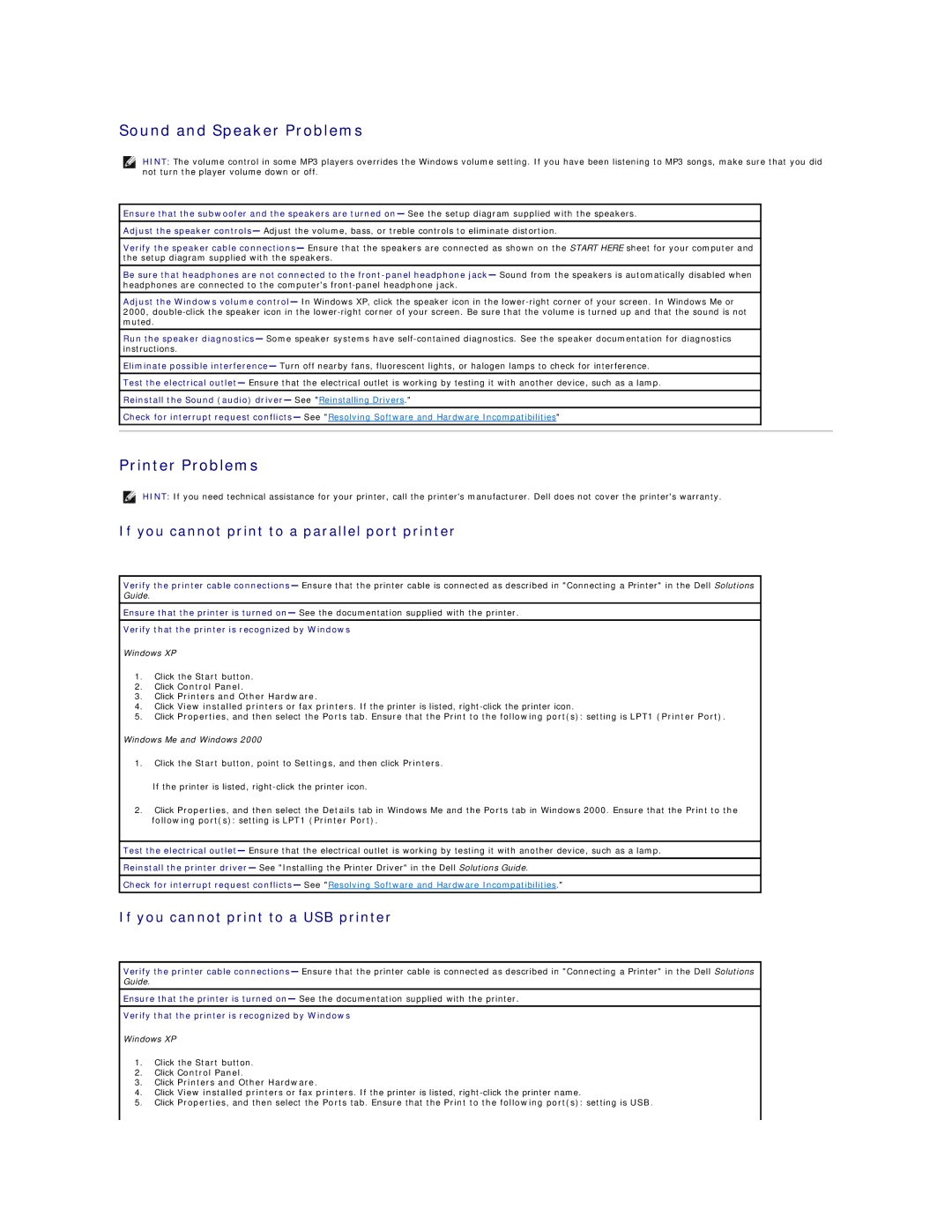
Sound and Speaker Problems
HINT: The volume control in some MP3 players overrides the Windows volume setting. If you have been listening to MP3 songs, make sure that you did not turn the player volume down or off.
Ensure that the subwoofer and the speakers are turned on— See the setup diagram supplied with the speakers.
Adjust the speaker controls— Adjust the volume, bass, or treble controls to eliminate distortion.
Verify the speaker cable connections— Ensure that the speakers are connected as shown on the START HERE sheet for your computer and the setup diagram supplied with the speakers.
Be sure that headphones are not connected to the
Adjust the Windows volume control— In Windows XP, click the speaker icon in the
Run the speaker diagnostics— Some speaker systems have
Eliminate possible interference— Turn off nearby fans, fluorescent lights, or halogen lamps to check for interference.
Test the electrical outlet— Ensure that the electrical outlet is working by testing it with another device, such as a lamp.
Reinstall the Sound (audio) driver— See "Reinstalling Drivers."
Check for interrupt request conflicts— See "Resolving Software and Hardware Incompatibilities"
Printer Problems
HINT: If you need technical assistance for your printer, call the printer's manufacturer. Dell does not cover the printer's warranty.
If you cannot print to a parallel port printer
Verify the printer cable connections— Ensure that the printer cable is connected as described in "Connecting a Printer" in the Dell Solutions Guide.
Ensure that the printer is turned on— See the documentation supplied with the printer.
Verify that the printer is recognized by Windows
Windows XP
1.Click the Start button.
2.Click Control Panel.
3.Click Printers and Other Hardware.
4.Click View installed printers or fax printers. If the printer is listed,
5.Click Properties, and then select the Ports tab. Ensure that the Print to the following port(s): setting is LPT1 (Printer Port).
Windows Me and Windows 2000
1.Click the Start button, point to Settings, and then click Printers.
If the printer is listed,
2.Click Properties, and then select the Details tab in Windows Me and the Ports tab in Windows 2000. Ensure that the Print to the following port(s): setting is LPT1 (Printer Port).
Test the electrical outlet— Ensure that the electrical outlet is working by testing it with another device, such as a lamp.
Reinstall the printer driver— See "Installing the Printer Driver" in the Dell Solutions Guide.
Check for interrupt request conflicts— See "Resolving Software and Hardware Incompatibilities."
If you cannot print to a USB printer
Verify the printer cable connections— Ensure that the printer cable is connected as described in "Connecting a Printer" in the Dell Solutions Guide.
Ensure that the printer is turned on— See the documentation supplied with the printer.
Verify that the printer is recognized by Windows
Windows XP
1.Click the Start button.
2.Click Control Panel.
3.Click Printers and Other Hardware.
4.Click View installed printers or fax printers. If the printer is listed,
5.Click Properties, and then select the Ports tab. Ensure that the Print to the following port(s): setting is USB.
